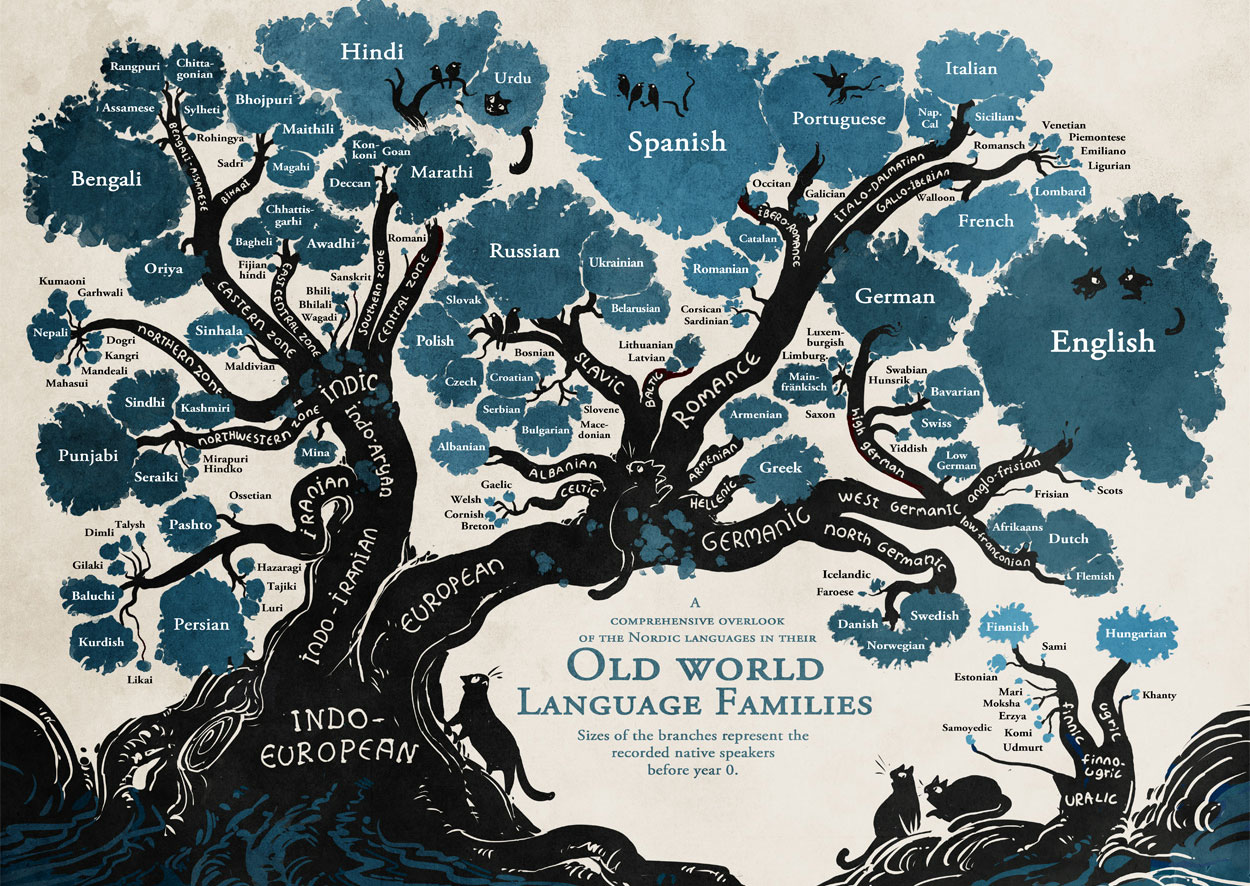The English language is the conduit of more human contact than any other language in the world. It is the official language of 58 sovereign nations in all six habitable continents. And when, for example, Bosnia & Herzegovina and Argentina played each other in the 2014 World Cup in Rio de Janeiro, Brazil, the players largely communicated with each other and referees in — you guessed it — English. Yet we might take for granted how our language came to be what it is today. Together we’ll look at the history of English and the journey it has taken from Paleolithic times, when it was proto Indo-European, to the bewildering genealogy of the lexicon we use today.
[Illustration from Minna Sundberg’s web comic Stand Still. Stay Silent.]


